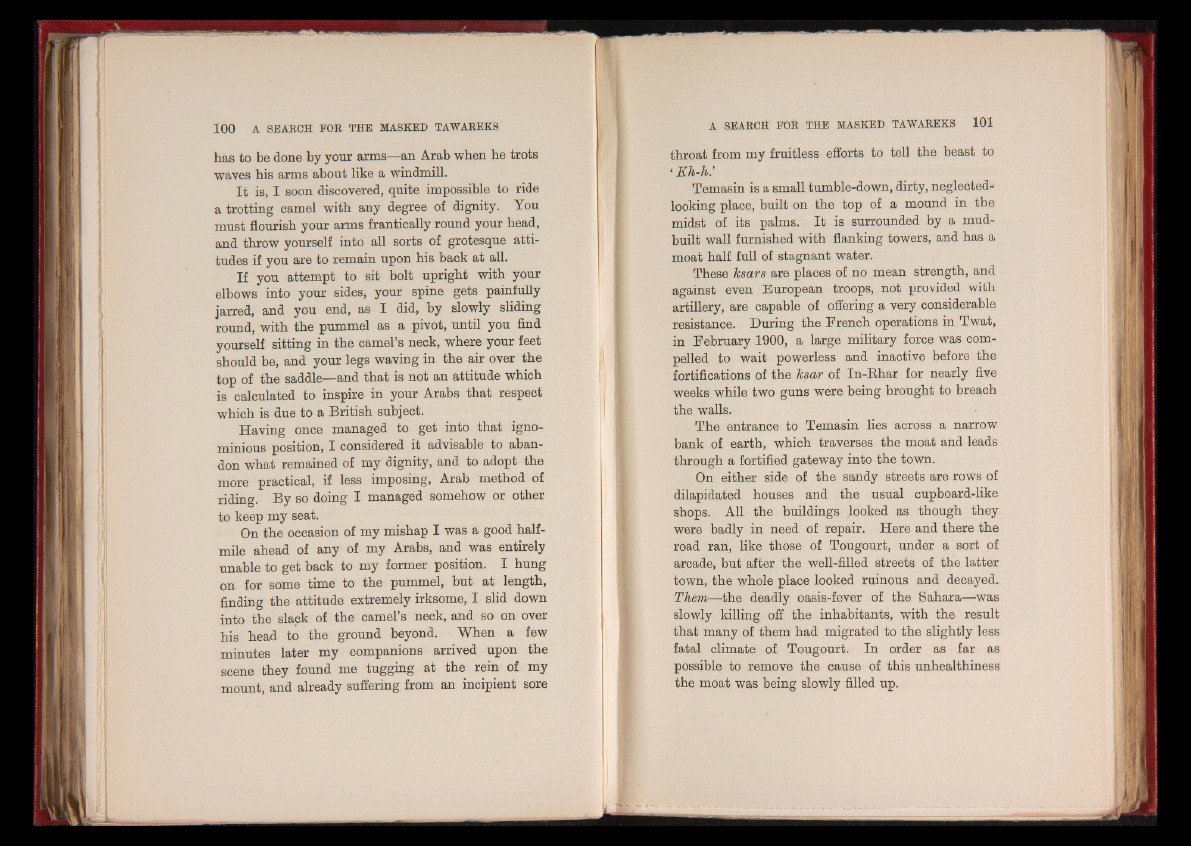
has to be done by your arms—an Arab when he trots
waves his arms about like a windmill.
It is, I soon discovered, quite impossible to ride
a trotting camel with any degree of dignity. You
must flourish your arms frantically round your head,
and throw yourself into all sorts of grotesque attitudes
if you are to remain upon his back at all.
If you attempt to sit bolt upright with your
elbows into your sides, your spine gets painfully
jarred, and you end, as I did, by slowly sliding
round, with the pummel as a pivot, until you find
yourself sitting in the camel’s neck, where your feet
should be, and your legs waving in the air over the
top of the saddle—and that is not an attitude which
is calculated to inspire in your Arabs that respect
which is due to a British subject.
Having once managed to get into that ignominious
position, I considered it advisable to abandon
what remained of my dignity, and to adopt the
more practical, if less imposing, Arab method of
riding. By so doing I managed somehow or other
to keep my seat.
On the occasion of my mishap I was a good half-
mile ahead of any of my Arabs, and was entirely
unable to get back to my former position. I hung
on for some time to the pummel, but at length,
finding the attitude extremely irksome, I slid down
into the slack of the camel’s neck, and so on over
his head to the ground beyond. When a few
minutes later my companions arrived upon the
scene they found me tugging at the rein of my
mount, and already suffering from an incipient sore
throat from my fruitless efforts to tell the beast to
‘ Kh-Ji:
Temasin is a small tumble-down, dirty, neglected-
looking place, built on the top of a mound in the
midst of its palms. It is surrounded by a mud-
built wall furnished with flanking towers, and has a
moat half full of stagnant water.
These ksars are places of no mean strength, and
against even European troops, not provided with
artillery, are capable of offering a very considerable
resistance. During the French operations in Twat,
in February 1900, a large military force was compelled
to wait powerless and inactive before the
fortifications of the ksar of In-Rhar for nearly five
weeks while two guns were being brought to breach
the walls.
The entrance to Temasin lies across a narrow
bank of earth, which traverses the moat and leads
through a fortified gateway into the town.
On either side of the sandy streets are rows of
dilapidated houses and the usual cupboard-like
shops. All the buildings looked as though they
were badly in need of repair. Here and there the
road ran, like those of Tougourt, under a sort of
arcade, but after the well-filled streets of the latter
town, the whole place looked ruinous and decayed.
Them—the deadly oasis-fever of the Sahara—was
slowly killing off the inhabitants, with the result
that many of them had migrated to the slightly less
fatal climate of Tougourt. In order as far as
possible to remove the cause of this unhealthiness
the moat was being slowly filled up.